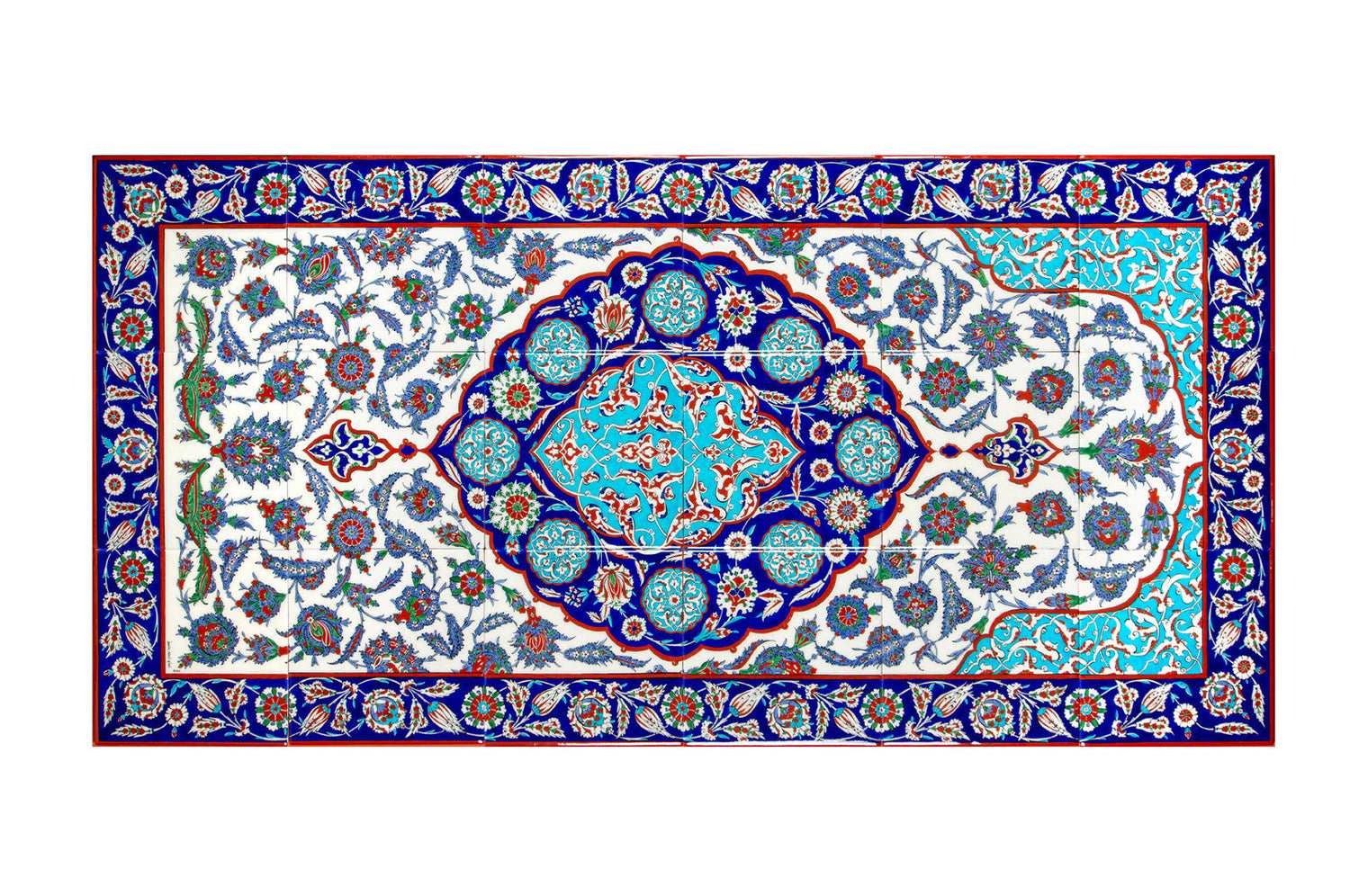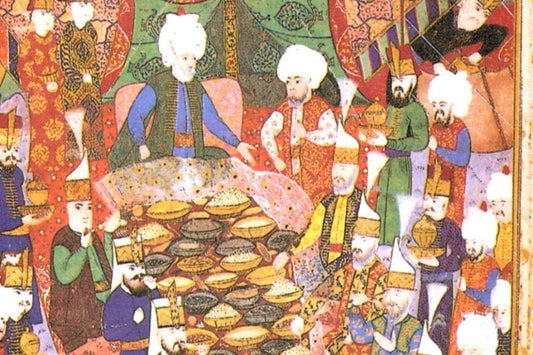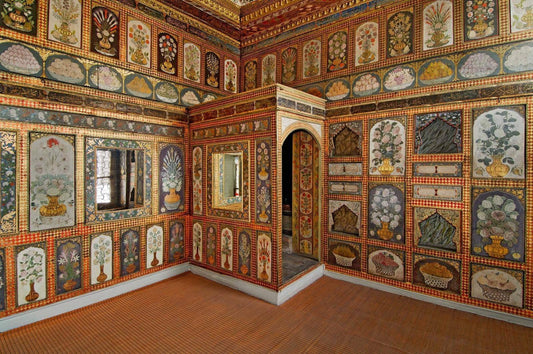The sun motif, named after the Arabic word "şems," meaning "sun," was used as a standalone motif, forming a frame that delimited the pattern within. This motif played a fundamental role in Ottoman art in the design of diverse compositional schemes.
Şemse's Place in Bookbinding
Bookbinding is one of the primary arts used for the şemse. Placed at the center of the front and back covers, and if present, the envelope of the leather binding of manuscripts, early examples of şemse have rounded, scalloped edges. Over time, şemse became oval, and extensions called salbeks were added to each end.
Evolution and Depictions of Şemse
The awls drawn on the edges of most şemse are also thought to depict sun rays. The cover arrangement of the salbekli şemse, with brackets placed at the four corners, has remained unchanged for centuries; only the motifs with which the şemse's interiors are decorated have varied. The interiors of the şemse, both on the bindings and on the illuminated first pages, called zahriye, of manuscripts from the Seljuk, Mamluk, and early Ottoman periods, are decorated with rumi motifs and stylized floral and geometric patterns.
Şemse in the Ottoman Classical Period
Hatayi motifs, Chinese clouds, and naturalistic flowers are prominent in the interior design of sunbursts during the Ottoman classical period. Free-flowing and quarter-symmetrical patterns are common in bookbinding art during this period, while half-symmetrical patterns are particularly popular in Iznik tiles.
Sunrise on Tiles
The first example of a panel featuring a şemse motif during the Ottoman period appears on the colored glaze tiles flanking the mihrab at the Green Tomb in Bursa. Blue and white ceramics dating from the late 15th and early 16th centuries used the şemse motif alongside stylized floral motifs. From the second half of the 16th century onward, the use of şemse motifs became widespread in tiles, and, as in the Selimiye Mosque in Edirne, it was predominantly used in arrangements. Oval medallions or şemse motifs, opening from one to the other and repeated in an infinite pattern, were arranged at intervals, enriching the composition with surrounding ornamental bands. Şemse motifs appear in a variety of arrangements on border tiles, ulema-patterned tiles, and panels; flowers such as tulips, carnations, roses, and hyacinths, either symmetrically branch out from a single root or rise on a single stem.
Şemse in Uşak Carpets
The şemse motif also holds a significant place in Uşak carpets. It was a characteristic motif of the 'medallion' Uşak carpets woven from the 16th to the 18th centuries. This type of carpet has a compositional scheme consisting of a row of round or oval medallions along the central axis and pointed segments at the sides, extending to infinity. The medallions are extended by salbeks emanating from the upper and lower ends; their interiors are filled with rumi, and the ground between them is filled with flowers. This scheme, seen in kemha and çâtma carpets dating to the 16th and 17th centuries, is also popularly used in the art of bookbinding, as is the angular şemse arrangement found in çâtma pillowcases. The şemse motif, which emphasizes the center, is a radial medallion resembling the sun, a striking application. In pure prayer rugs, each niche with a lamp hanging from it features şemse ornamented with floral bouquets, similar to those found in tile panels. The salbekli şemse composition was used in palace carpets, silk floor mats woven on the island of Chios, and in bookbinding decorations.
European Influence and the Continuity of Şemse
Although many motifs were abandoned under the influence of European art, the use of the şemse within the traditional patterns of bookbinding persisted. In the art of illumination, as a result of the expansion to the West, new styles merged with traditional artistic understanding, creating a new style known as Turkish Rococo. In the ornate illuminated manuscripts of the 18th and 19th centuries, especially in the Qurans, graceful examples of naturalistic floral bouquets can be found among the şemse-shaped rose markings in the margins. The same delicate floral şemse was also applied to metalwork.
The Unique Reflection of Şemse in Ottoman Art
The Şemsli pattern is a significant element reflecting the depth and aesthetics of Ottoman art. Throughout history, it has taken on diverse forms and meanings, leaving a cultural and aesthetic legacy. Combining this rich Ottoman cultural heritage with a modern approach to design, the Şemsli Naturalist Pattern is brought to your home with the unique design of Serap Ereyli and İznik Blue Tile. Measuring 40x100 cm, this unique piece is a masterpiece that combines history and art. To bring this artistic legacy to life in your home, click the link to access the panel.
Resources
Motif, Turgut Saner, Şebnem Eryavuz and Hülya Bilgi, pp.180-181.




